Mastermind behind art shows
2010/04/17
RACHEL JENAGARATNAM
Shooshie Sulaiman tells RACHEL JENAGARATNAM about her multi-faceted role in the art scene
IF you had to define the word “curator” in a quiz show, would you opt to “phone a friend”, “ask the audience” or answer the question yourself? After all, it’s a relatively unknown job and very few people know just how important a curator is in the art world.
Major art institutions and galleries are incomplete without curators whose task is to create shows that raise their profile and draw audiences in.
Shooshie Sulaiman, an artist-curator and gallery director of 12, explains: “The curator is the mastermind behind the exhibition. The curator handles promotion, operations, management and does the writing. The curator directs the entire show.” But in this country, Shooshie feels that the curator’s responsibilities have been reduced to just writing tasks. “To me, the job involves many things. You can release a one-page statement for an art exhibition, but there are so many other things involved.
“The budget, for example. Oh, the budget!” she says, laughing. As gallery director, Shooshie has balanced a spreadsheet or two, having curated a number of unorthodox exhibitions that challenge the norm among art galleries in the city.
Priority is placed on the message behind each exhibition, ample documentation and unconventional displays that give audiences the ultimate benefit of learning from the artworks.
Notable exhibitions she has curated include Ahmad Fuad Osman’s Dislocated, Puah Chin Kok’s Art as Photography as Art, and 12’s Archive series, which has seen her and her team excavate and document the life and works of artists with a zeal and effort that archaeologists would be proud of.
Recently, she has extended her role as a curator into other areas, notably managing the private art collection of Aliya and Farouk Khan (AFK).
“My team and I were initially asked to create an inventory for the collection. Then I proposed a few other stages. Photo documentation is first and we also plan to research each individual artwork, but it’s a big task,” she explains.
Today, the AFK collection boasts almost 1,000 contemporary homegrown artworks and is arguably the most formidable in the country. The quality and number are enough to rival that of a bona fide institution’s. Last year, the AFK collection bridged the private-public divide with a showcase at the Danga City Mall in Johor Baru. It was shown as part of the Iskandar Malaysia Contemporary Art Show, where Shooshie served as curator.
“Curating that show was really amazing. Never before had an art fair been exhibited that way here,” she says, beaming, referring to the use of vacant shoplots in the mall and the fair’s various fringe programmes that included an artist residency and an art competition that fished out new talents in the growing contemporary art scene.
Puah Chin Kok — Exhibition featuring unique display of photographs
“It was massive, but I liked it because it was challenging,” says Shooshie, an established artist herself.
“Your biggest challenge — as an artist or curator — is to create artwork for the public. In Kuala Lumpur, you still have gallery goers, but in Johor, this isn’t the case!” The AFK collection will be shown again soon together with the launch of a book about the collection’s artists and artworks. Shooshie will once again helm the curatorial duties.
Has it been a tough job managing such an extensive collection? “It’s not difficult, but I consider it a very interesting journey,” says Shooshie, who also speaks highly of the collectors.
“With Farouk, it goes two ways and I really enjoy the discourse we have. We learn from each other.” Matching levels of enthusiasm between the collector and the curator is the key in their relationship.
“Farouk would travel to Kelantan and stay there for 10 hours to be with an unknown artist and then travel back to KL. I like this obsession. It matches my own passion,” says Shooshie.
She and her team — Fatina Alfis and Farah Alwani — have been around long enough to see the collection grow.
“Farouk’s collection started with two-dimensional works, but he’s moved into other mediums such as installations and drawings,” she says, adding that this lends another fascinating dimension to the AFK collection.
For Shooshie, the personal gains of being a curator are obvious. She says it is the perfect balance to her fine art practice.
“The best experience for an artist is to create something, be it an exhibition or artwork,” she sums up.
Still confused about what a curator does? Well, if you are ever in the hot seat in a quiz show, you know who to call.
Sunday, April 18, 2010
Subscribe to:
Post Comments (Atom)






















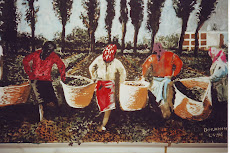

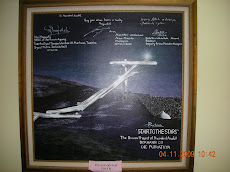





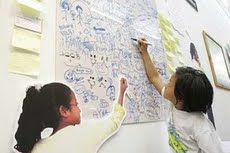

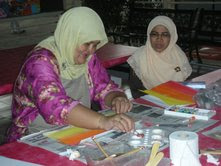.jpg)

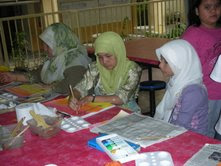


No comments:
Post a Comment